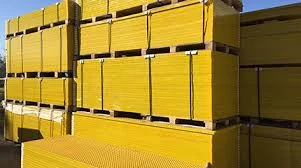
-
 Afrikaans
Afrikaans -
 Albanian
Albanian -
 Amharic
Amharic -
 Arabic
Arabic -
 Armenian
Armenian -
 Azerbaijani
Azerbaijani -
 Basque
Basque -
 Belarusian
Belarusian -
 Bengali
Bengali -
 Bosnian
Bosnian -
 Bulgarian
Bulgarian -
 Catalan
Catalan -
 Cebuano
Cebuano -
 China
China -
 China (Taiwan)
China (Taiwan) -
 Corsican
Corsican -
 Croatian
Croatian -
 Czech
Czech -
 Danish
Danish -
 Dutch
Dutch -
 English
English -
 Esperanto
Esperanto -
 Estonian
Estonian -
 Finnish
Finnish -
 French
French -
 Frisian
Frisian -
 Galician
Galician -
 Georgian
Georgian -
 German
German -
 Greek
Greek -
 Gujarati
Gujarati -
 Haitian Creole
Haitian Creole -
 hausa
hausa -
 hawaiian
hawaiian -
 Hebrew
Hebrew -
 Hindi
Hindi -
 Miao
Miao -
 Hungarian
Hungarian -
 Icelandic
Icelandic -
 igbo
igbo -
 Indonesian
Indonesian -
 irish
irish -
 Italian
Italian -
 Japanese
Japanese -
 Javanese
Javanese -
 Kannada
Kannada -
 kazakh
kazakh -
 Khmer
Khmer -
 Rwandese
Rwandese -
 Korean
Korean -
 Kurdish
Kurdish -
 Kyrgyz
Kyrgyz -
 Lao
Lao -
 Latin
Latin -
 Latvian
Latvian -
 Lithuanian
Lithuanian -
 Luxembourgish
Luxembourgish -
 Macedonian
Macedonian -
 Malgashi
Malgashi -
 Malay
Malay -
 Malayalam
Malayalam -
 Maltese
Maltese -
 Maori
Maori -
 Marathi
Marathi -
 Mongolian
Mongolian -
 Myanmar
Myanmar -
 Nepali
Nepali -
 Norwegian
Norwegian -
 Norwegian
Norwegian -
 Occitan
Occitan -
 Pashto
Pashto -
 Persian
Persian -
 Polish
Polish -
 Portuguese
Portuguese -
 Punjabi
Punjabi -
 Romanian
Romanian -
 Russian
Russian -
 Samoan
Samoan -
 Scottish Gaelic
Scottish Gaelic -
 Serbian
Serbian -
 Sesotho
Sesotho -
 Shona
Shona -
 Sindhi
Sindhi -
 Sinhala
Sinhala -
 Slovak
Slovak -
 Slovenian
Slovenian -
 Somali
Somali -
 Spanish
Spanish -
 Sundanese
Sundanese -
 Swahili
Swahili -
 Swedish
Swedish -
 Tagalog
Tagalog -
 Tajik
Tajik -
 Tamil
Tamil -
 Tatar
Tatar -
 Telugu
Telugu -
 Thai
Thai -
 Turkish
Turkish -
 Turkmen
Turkmen -
 Ukrainian
Ukrainian -
 Urdu
Urdu -
 Uighur
Uighur -
 Uzbek
Uzbek -
 Vietnamese
Vietnamese -
 Welsh
Welsh -
 Bantu
Bantu -
 Yiddish
Yiddish -
 Yoruba
Yoruba -
 Zulu
Zulu
extension of a threaded rod how to properly extend a ...
Proper Methods for Extending a Threaded Rod
Threaded rods are essential components used in various applications, ranging from construction to machinery. When an application requires a longer threaded rod, extending it properly is crucial to maintain strength, stability, and safety. Here are some guidelines on how to extend a threaded rod effectively.
Understanding Threaded Rods
A threaded rod is a long rod with continuous helical ridges (threads) running its length. They are commonly used in fastening and joining materials. While it might seem straightforward to just add another rod, improper extension can lead to mechanical failure or structural weakness.
Selecting the Right Materials
The first step in extending a threaded rod is selecting the appropriate materials. Ensure that the new rod matches the specifications of the existing one, including diameter, thread pitch, and material type (e.g., steel, stainless steel, or aluminum). Using incompatible materials can lead to corrosion issues or inadequate strength.
Using Proper Fastening Techniques
When extending a threaded rod, proper fastening techniques are essential
. There are several methods to extend a rod1. Coupling Nuts One of the most common ways to extend a threaded rod is by using a coupling nut. This hexagonal nut is internally threaded and can connect two threaded rods. To use a coupling nut, ensure that both rods have the same thread size and pitch. Simply screw one end of the existing rod into one side of the coupling nut, and then screw the new rod into the other side.
extension of a threaded rod how to properly extend a ...

2. Thread Locking Adhesives For added security, consider using thread-locking adhesives when connecting the rods. This prevents loosening due to vibrations and external forces. Apply the adhesive before screwing the rods together, and allow it to cure according to the manufacturer's instructions.
3. Welding In some cases, welding may be an option for extending a threaded rod, especially if the extension doesn't require disassembly. This method is best suited for applications where the rod is subjected to significant loads, provided the weld is done correctly to ensure the strength is maintained.
Ensuring Proper Alignment and Torque
Alignment is crucial when attaching a new threaded rod to an existing one. Misalignment can lead to increased wear and tear and operational issues. Use a level to ensure the extension is straight. Additionally, apply the correct torque to the connection. Over-tightening can stretch or damage the threads, while under-tightening can result in a weak connection.
Testing the Extended Rod
After extending the rod, it is essential to test the integrity of the connection before putting it to use. Apply a load similar to what it will experience during actual use and observe for any signs of failure or movement.
Conclusion
Extending a threaded rod can be effectively accomplished by selecting the right materials, employing appropriate fastening techniques, ensuring proper alignment and torque, and conducting thorough testing. By following these guidelines, you can ensure a safe and durable extension, contributing to the overall stability and functionality of your project.









